The right riding surface is all about sand that doesn’t slip away.
Article on High- and Low Tide arena system and Soiltex, imported geotextiles, Featured in California Riding Magazine, August 2008
California is on the cutting edge of many technologies and societal trends, but we’re behind the times when it comes to arena footing for equestrian sports. That’s the observation of Footing Solutions USA founder Hilo Nick.
She moved to California 15 years ago, from her native Germany, and has been frustrated most of that time by how hard it was to find arena footing that has the right amount of stability and cushioning.
For the most part, the current approach to arena construction and riding surfaces is the same as it has been for the past 30 years, most of it revolving around adding or subtracting rubber additives to the arena sand mix.
The owner of a small historical stable in Santa Barbara’s Hope Ranch, Hilo tried many materials and re-did her arena many times, all to no avail. “Whenever I went back to Germany, the footing was so
Wonderful” she relays. “ I decided to use their additives and similar sand”.
She first bought the materials just for her own arena, and then partnered with select German companies to bring their systems and products to the U.S.
The resulting Footing Solutions USA line include imported geo-textiles, Soiltex, the HIT-Draingrid, a module for arena base construction and paddocks, the High- and Low Tide arena system, also called ebb and flow arena; and a high-tech engineered arena drag for optimum daily maintenance. All have been used successfully in Europe for the last 15 years.
Four-time Olympic show jumping medalist Ludger Beerbaum and World Cup dressage contender Ellen-Schulten-Baumer are among the top German equestrians who use and endorse these arena footing systems, in both cases the High- and Low Tide arena system.
Sand plays a big part in the world of arena footing, starting with the notion that the best riding surfaces for dressage and jumping simulate the sand near the water line at low tide.
The distribution of water in the sand is even here, and the surface is firm, yet cushioned.
The arena footing of the High- and Low Tide system is the top of the line – this surface creates the optimum balance between impact absorption in the loading phase, resilience during the break over and stability during take off.
The High- and Low Tide arena system uses a specially welded liner that establishes a watertight basin on which the moisture exchange system is installed. Drainage and water supply pipes are laid out and then connected to sensors and a pump, which regulates the optimum water level underneath the riding surface automatically. Unreliable sprinklers become unnecessary; drainage problems during rainfall are problem of the past.
The system is covered with a customized, high capillary silica sand blend.
Adjusting the footing’s water content is as easy as turning a dial. The arena will have equal moisture at very inch to create the ideal equestrian surface. The moisture level can be adjusted for different uses: With a higher level of moisture under the top layer, the arena surface becomes firmer preferred by jumpers and carriage drivers. With lower water saturation under the top layer, the riding surface becomes more pliable for the dressage horse. It is that simple to have an arena designed for optimal performance, soundness and convenience.
The High- and Low Tide set-up is not something everybody can afford, but Hilo thinks that West Coast show grounds should consider it to draw more international competitions to the West. She points to the success of the High- and Low Tide installation in Wellington Florida in 2000.
Sand 101
Footing Solutions’ USA additives to a conventionally built sand arena are the next best thing to installing the complete High- and Low Tide, Hilo says. This is especially true when the cost is amortized over what is typically a very long life for such surfaces.
The additives called ‘Soiltex’ are manufactured in Europe and consist of high quality geo-textiles. Synthetic textile felt is ground into small pieces, then blended with polyester fibers and mixed with high quality sand. This blend achieves the optimum arena footing, providing shear strength and spring. “It’s all about the stability of the sand,” Hilo asserts. “ I see a lot of footing in the Western United States that is too loose, it’s shifting, which makes the horse’s job harder and puts more strain on their tendons and suspensories. The equestrian surface should offer enough resistance to allow push off without the horse sinking too deeply. At the same time, it should help absorb some of the concussion when his feet hit the ground.”
High quality sand is essential to creating and maintaining the right riding surface, Hilo continues. “ The next time you talk with your contractor or visit the quarry, explain that you want sand that is ‘hard’, quartz’, ‘glacial’ and ‘angular’. Unlike ‘river sand’ which has rounded particles, the sand you want for your arena footing will be durable (silica/quartz last a very, very long time) and angular for better traction.”
Good sand isn’t cheap, she warns. “But don’t be tempted to go with ‘dirty sand’ or ‘river sand’ or ‘manufactured sand’ – those not only won’t provide the arena footing that you want no matter which additives you choose, they will also wear out much more quickly and decompose into stone dust in no time.” The upfront expense of getting the right sand the first time around makes for an economical arena when measured over the long haul.
She finds it unfortunate and a little ironic that so many Americans have purchased excellent European Warmbloods only to have them break down after a relatively short time working on the riding surfaces here. Since opening Footing Solutions USA in early 2007, Hilo has been tackling that problem one arena at a time. If her busy schedule is any measure, arena owners in California and throughout the country are catching up with European advances in arena footing. Certainly, the topic has been a hot one at the top hunter/jumper circuits on both coasts, and a trickle down effect may have triggered a higher awareness of the importance of horse arena footing in a horse’s performance and long-term soundness.
Article reprinted with permission, California Riding Magazine, August 2008
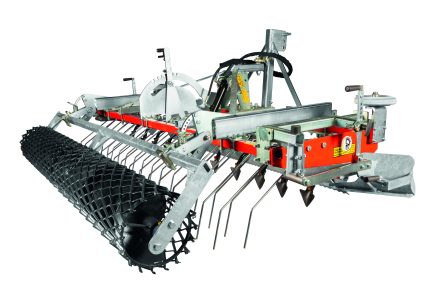
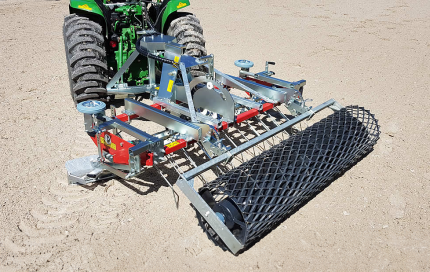
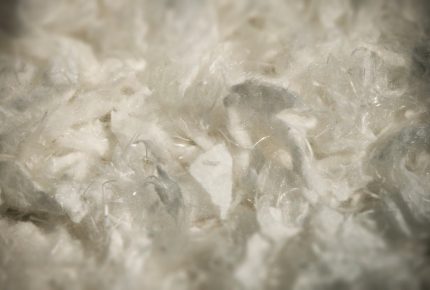
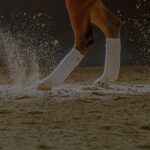 Geotextile Arena Footing
Geotextile Arena Footing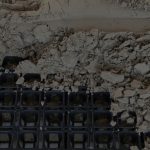 Ground Mats and Grids
Ground Mats and Grids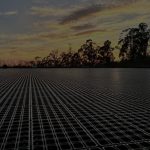 Subsurface Irrigation
Subsurface Irrigation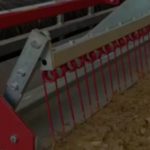 Arena Drags & Groomers
Arena Drags & Groomers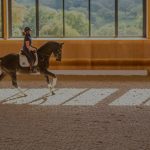 Mirrors and Kickwall
Mirrors and Kickwall Horse Wellness
Horse Wellness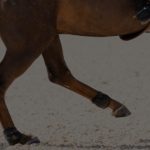 Dust Control
Dust Control